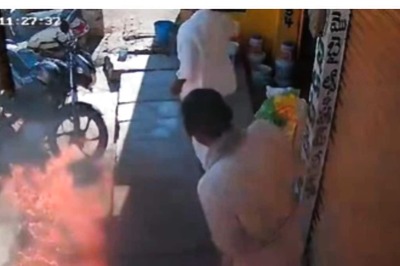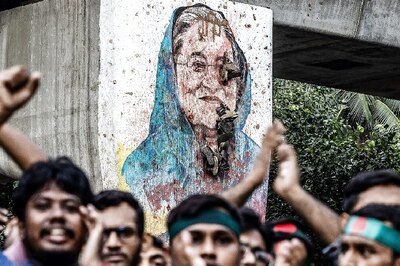
views
New Delhi: A lot has changed in Manipur in the past three years. In 2017, the seat of power changed hands from Congress to the BJP, despite the former being the single largest party in the legislature. BJP, in coalition with other regional parties, formed a government in Manipur for the first time.
Between two governments, a lot has also remained the same. The demand for the protection of indigenous identity in Manipur has been around for years. On July 23, the new BJP government turned that demand into a reality by passing the Manipur People’s Protection Bill. The Bill, which seeks to regulate entry and exit of non-Manipuris into the state, has also sparked protests from people who have now been deemed “outsiders”.
What is People’s Protection Bill?
The People’s Protection Bill was passed on 23 July, 2018 during the fifth session of the eleventh Manipur Legislative Assembly. It saw the demands of the majority community of Meiteis in the valley come to fruition. The Bill defines “Manipuris” and “non-Manipuris” and seeks to regulate the entry and exit of the latter in order to protect the interests and identity of the former. According to the Bill, Manipuri included the Meiteis, the Pangal Muslims, Manipuri scheduled tribes listed under the Constitution and Indian nationals who have been living in Manipur before 1951. Those who didn’t fall under this umbrella were deemed “non-Manipuris” and were given a month to register themselves to the authorities. Additionally, outsiders visiting the state would have to obtain an Inner Line Permit, a system that is in place in three other North Eastern states: Arunachal Pradesh, Mizoram and Nagaland.
For this Bill to become a reality, it requires a nod from the President of India.
Issues with the Bill
The draft Bill had the cut-off year of 1971, but in the final version which was passed in the Assembly, it was changed to 1951. This means only those residents who had their names in the village directory or National Register of Citizens (NRC) in 1951 would be construed as Manipuri and everybody else would need permits to stay in the state.
HM Mangchinkhup, chief convenor of Joint Action Committee Against Anti-Tribal Bills, who had spearheaded the agitation against the three similar bills tabled by the previous Congress government in 2015, told The Indian Express that a 1951 cut-off was problematic for tribal communities as data of several villages in the National Register of Citizens, 1951, as well as in the Village Directory of 1951 is not available or not accurate – which, in turn, could render many tribals as non-state subjects. He also said that the cut-off year should be taken as 1972.
The state of Manipur was formed on January 21, 1972 and thus a number of stake holders wanted it to be the cutoff date.
What is Inner Line Permit (ILP)?
The ILP is a British-era system to regulate entry and exit of outsiders in a protected area. An outside visitor must produce the official document to gain entry to the area. The demand for ILP in Manipur has been on for years and has led to protests and clashes that often turn violent.
“Protection of indigenous people is a must. Everyone is doing it, from Nagaland to Assam. But it must not be along communal and religious lines. There are 36 tribes in Manipur; we have to take all of them into account,” Chief Minister N Biren Singh had told Scroll in September last year after resurgent demand for an ILP like structure.
The violent past of predecessor Bill
Protection of Manipur People's Bill 2015, the Manipur Land Reforms and Land Revenue (7th Amendment) Bill, and Manipur Shops and Establishment (2nd Amendment) Bill, 2015 were passed on a single day in 2015.
As soon as the news reached the hill districts, people hit the streets to protest. The epicentre of the protest was Churachandpur and nine protesters lost their lives in the violence that followed.
While the tribal groups did not have a problem with ILP, the other amendments created furore. Tribal organisations were suspicious that under the garb of these bills a majority of Meitie community was attempting to grab the tribal land.
Though the Bill was passed by the Manipur Assembly, President refused to sign it and sent it back for further consultation.
This People’s Protection Bill 2018 is the successor of these three Bills.
Protests against People’s Protection Bill
For now, the protest around this Bill has been muted, unlike its predecessor in 2015. However, protests did erupt in Jiribam district following the passing of the bill. According to a report in The Hindu, at least 10 people, including a Superintendent of Police, were injured as protesters clashed with the police. Section 144 of the CrPC was imposed in the district, prohibiting unlawful assembly. However, a Joint Action Committee rallied against the bill, which led to clashes with the police.




















Comments
0 comment